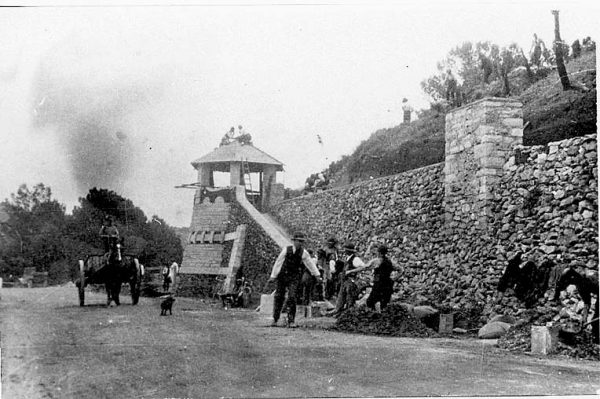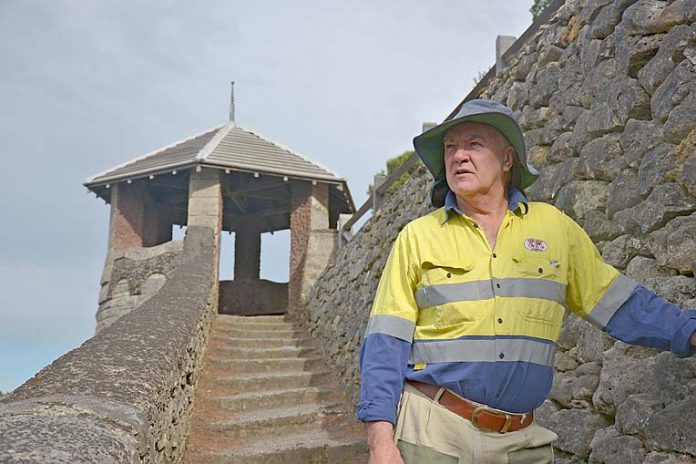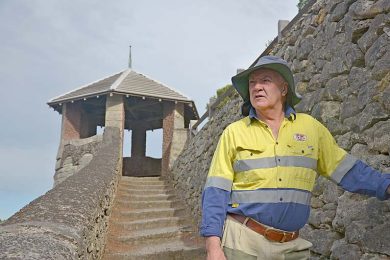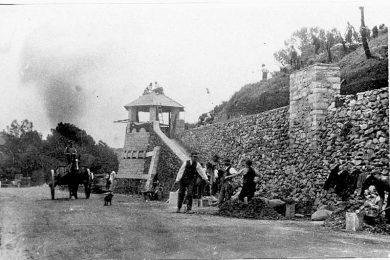
ROME was not built in a day – but nearly 100 years ago the Rook Walk overlooking Mount Gambier’s Crater Lakes was.
The walkway alongside the Blue Lake, featuring a 10ft stone wall and three lookouts, was constructed by 800 local men during the city’s biggest ever working bee on November 27, 1918.
Mount Gambier City Council will recognise the 100 year anniversary of the remarkable construction and support the development of an event to bring together and engage the community in celebrating the milestone.
A member of the council’s heritage committee with family ties to the construction of Rook Walk said the site represented a “truly remarkable feat”.
“It is an incredible example of what can be achieved through teamwork,” said Ken Jones, admiring the walkway from the main lookout.
“I’m sure many people don’t realise the significance of the structure, but the story is awe-inspiring, the entire community came together to build this.
“To think it was built in only one day, 100 years ago and without the technology we have now is mind-blowing.
“Both of my grandfathers worked on the construction of the wall – my mother’s father Angus Ferguson of Moorak and my father’s father William Westbury.”
Mr Westbury had earlier served in the Boer War and World War I, surviving the chaos of the landing at Gallipoli.
Mr Ferguson was a renowned stonemason who also helped to build the Blue Lake Pumping Station.
A public holiday was declared for Mount Gambier residents to construct the walkway on that day in late November.
While 800 men built the Rook Walk in teams, 300 women prepared food and served meals and around 700 visitors and 650 school children turned out to watch.
Materials were transported to the construction site on horse drawn carts.
“Cement was expensive and hard to come by here in the early 1900s, so they would have likely used burnt lime to build this structure,” Mr Jones said.
“Teams of men would have melted limestone somewhere and carted it here, mixed it with some sand and water and used it as a plaster.
“It’s a timeless design and as far as I’m aware has only required minimal restoration since it was built nearly 100 years ago.”
Originally referred to as the Elevated Walk and Rest Lookout, the plans were drawn by Margaret French and Eleanor Warren.
The walkway was named Rook Walk after Mount Gambier and District Progress Association president Arthur Rook, who died of influenza after World War I during the worldwide pandemic.
Council’s heritage committee will develop a plan for an event or series of events to celebrate the centenary milestone.
“We are still discussing a number of possibilities,” Mr Jones said.
“We would look at closing this section of the road for half a day to stage a bigger community event at the site and we have discussed a few smaller events in the lead-up to the anniversary.
“It is important we promote the history of the Rook Walk and celebrate what was a truly remarkable feat for the people of Mount Gambier, which demonstrated the power of people working together.”











